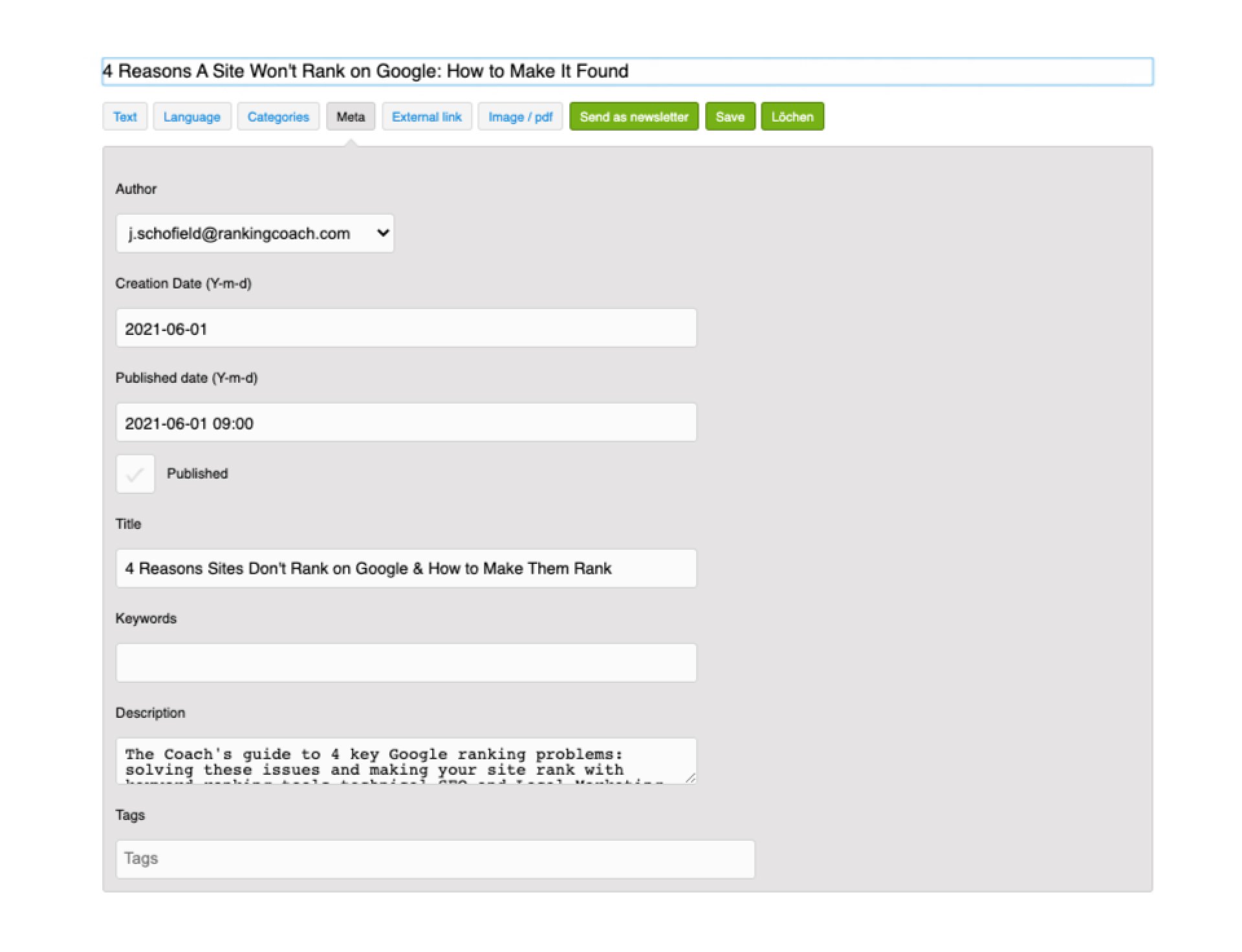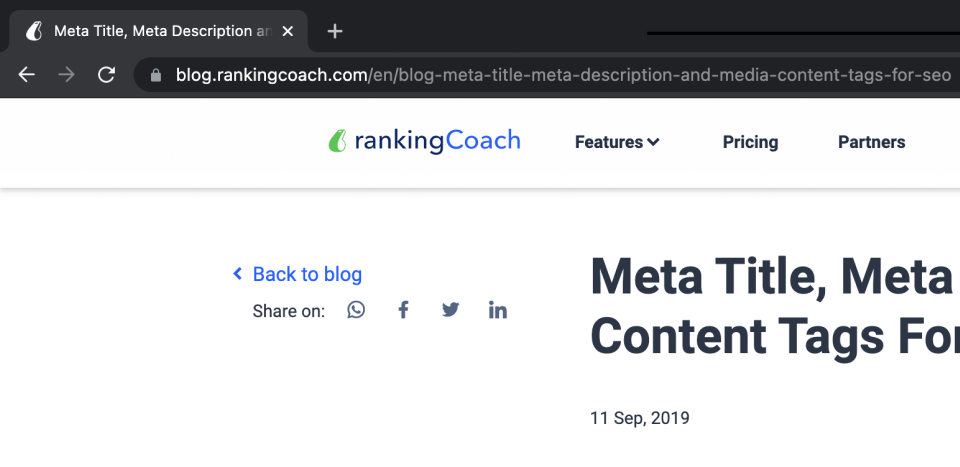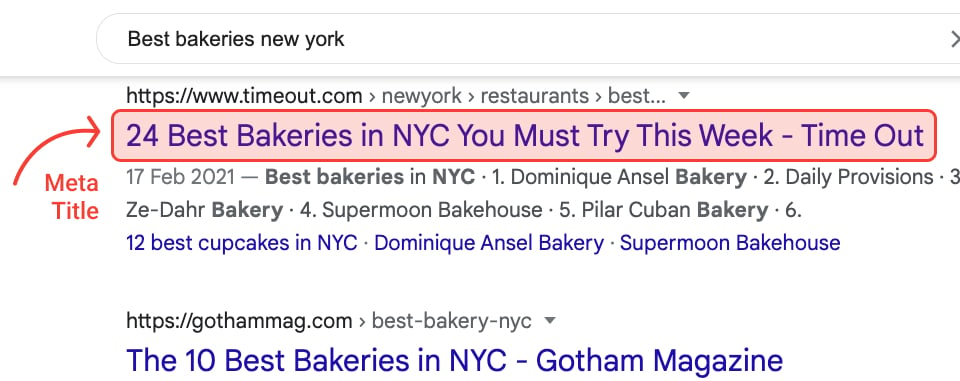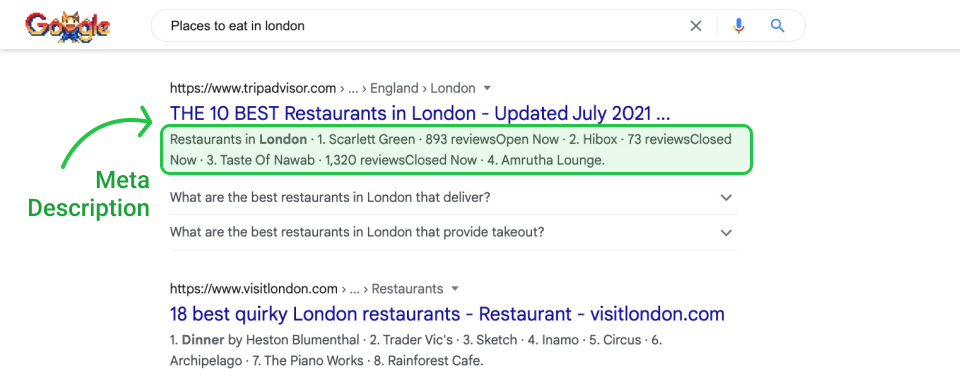Meta Title, Meta Description and Media Content Tags For SEO
30 Jul, 2021

All The SEO Meta Tags You Must Add for SEO Success
No matter how well-written your SEO content is, if you don’t take time to learn about the most important keyword meta tags for SEO, and set up these meta tags properly you aren’t doing your site and its SEO content justice, you can get help from a SEO Agency. So first things first
What Are Meta Tags?
SEO Meta tags are special labels for the page of your website that summarize the key topics and points covered on a page. In many ways meta tags act as a kind of mini blurb for each page, making pages more clickable on the search engines results pages and helping search engines like Google to index page content more accurately.
Where to Add Meta Tags?
Whenever you create a new page for a site, whether it's a product landing page
or a blog post – you will have the option of adding meta tags. On all CMSs, you will find a tab for each page that gives you the option of entering these.

If you want any of these pages to rank well on Google, you must take a little time to think about the best ways to write in your meta tags, especially the meta title and meta descriptions. In this article, we will explain why you should always be entering keywords in key meta tags such as the meta title, meta description and image alt tags, as well as examples of best practices for SEO meta tags.
What Is A Meta Title?
The meta title Is the short header for your page that will appear in the search results. You are staring at one of the products of a meta title right now. Meta titles are often used to generate the title written in the tab of your browser for this page. So for example on this page, it’s this one

What Is The Main Use of A Meta Title for SEO?
When it comes to SEO, meta titles are a key part of securing top rankings and clicks. They form the top line of the snippet that appears for page listings in the search results, effectively generating the first info the user sees on a page. This is the message that draws the searcher in encouraging them to click. The title tag appears in bold below the URL of the search result on the Google search results page. Here is an article in the SERP, The title tag is the first line:

Best Practice for Meta Titles & SEO
To write the perfect meta title for SEO you must focus on perfecting two areas
1) Creating a presentable meta title of the right length
2) Writing a clickable meta title that includes SEO keywords
The perfect length for Meta Titles
The first mistake many people make with meta titles is making them too long. It’s important to include keywords but you have to focus on the most important ones for a page because a meta title that is too long will create a page title in the SERP that either looks messy or makes no sense. Creating a meta title that is too short can also look strange as well as being a missed opportunity to grab the attention of searchers.
Now the next obvious question is
what should the maximum length of a meta title be?
Believe it or not, even Google cannot give an exact number that will work in all cases. Those who are on the safe side will say that meta titles shouldn’t be any longer than 50 characters whereas those who want to squeeze out every last space for engaging copy can say 70 characters.
The reason why there is such a variance in number recommendation is that the space available is based on the number of pixels not letters, some letters take up more pixels than others. A happy medium that works 90% of the time is to keep your meta titles under 60 characters, but make sure you check your pages in the SERP every now and then by typing the meta title into Google and seeing how your page is displayed in the listing.
SMB TIP: If you can’t find your pages at all on search engines, Google may be having problems finding and indexing your pages. This is likely to be due to a technical problem with your website. To resolve these kinds of problems you should conduct a full SEO audit of your website. Get one now with rankingCoach360
Creating a Clickable Meta Title
There are two key aspects to creating a clickable meta title for SEO in the Google results. The first is keywords, your most important keyword phrase should always be in the H1 and meta title of your page. This shows Google that this phrase is important and the main topic covered in your content. If you are targeting your content correctly. It is also the phrase searchers will be using to find your page. By making it the first thing they see you are improving your chances of getting clicks.
The second side of this is the wording of your title. It needs to include engaging words that make the searcher want to click and appeals to a specific audience. For example, SEO content for content marketing often comes in the form of educational materials. If you are writing a meta title for a learners’ guide to your products, you should use wording that makes your content sound authoritative to your target audience. So for this example ‘the ultimate beginners guide to insert keywords phrase’ or ‘everything you must know about keyword phrase’.
Adjectives used for each industry and keyword grouping may be different but you almost always find certain descriptive phrases that the top-ranking results use in the SERP
SMB Tip: To find out the keyword phrases that work best for your site in the SERP you should use keyword monitoring tools. These will help you track the effectiveness of your meta titles and descriptions and to monitor your competitors’ meta tags, so you can stay ahead.
Get FREE Keyword Monitoring Tools Now
What Is A Meta Description?
The meta description, sometimes just shortened to page description on CMS’s, is usually a longer text than the meta title offers a short summary of what the content on a page is all about. Space limitations and the meta description's importance for SEO mean that you should be focusing on creating a summary that has a targeted appeal.
What Google Uses The Meta Description For?
Google Guru Matt Cutts got extremely ‘meta’ with meta tags when, in a Google video on advanced SEO, he asked himself: ‘How much time should I spend on meta tags and which ones matter?’ In his answer to his own question, Cutts pointed out the particular importance of meta titles saying that search engines like Google don't just read the meta titles and meta descriptions for ranking, they are also used to create site listings on search engines. If we want to do your website's content justice, you really need to pay careful attention to the meta title and meta description. If our listings are unappealing or nonsensical, users aren't going to click on the content.
SMB TIP: You should include the most important keyword for each page you are optimizing in your metal title. You can make sure you have the best value keywords for your site with the help of keyword tools like those featured in rankingCoach FREE
Get FREE Keyword Tools Now
How to Get The Meta Description Right
Next, we have the meta description which appears below the site URL. This should be no longer than 150 characters. The Meta Description's additional length provides more opportunities for keywords meaning you should be able to include the main keyword you are optimizing again plus 2 or 3 other keyword phrases you may be optimizing for.
It is always good to take a look at how your pages are displayed on search engines – especially if you have entered a meta title or meta description that is close to the previously suggested character limits. An easy way to do this is to paste your website's URL into the search box on Google. Please note, It may take up to three days for a website to appear in the listings, so don't panic if you can't find your page on Google the day you post it.
SMB TIP: If you are still not sure what to write in your meta description you should take a look at Google’s search engine results page for the term you are targeting the ranking results on the first page should offer you some good examples of meta titles and meta descriptions for your industry. Competitor monitoring tools like those found in rankingCoach FREE can also help you learn the best practices from your competition

Get FREE Competitor Monitoring Tools Now
Updating Your Meta Titles And Meta Descriptions
Do not feel the pressure that your meta title and meta descriptions need to be perfect the first time you write them. What’s important is that you have a keyword target that your content and meta tags are effectively targeting.
Often, through SERP and competitor analysis you will find ways of improving your meta tags over time. You may also find that your pages rank for other keywords than the ones you are targeting so you replace these in the meta title and meta description. SEO always has many elements of trial and error, what’s important is that you always have clear targets, a sense of your own progress and an eye on the competition.
Are Meta Keyword Tags Still Relevant?
Some of you may think we have missed a meta tag, namely keyword meta tags. We still have the option to add these during the posting process, but there are probably better things to do with your time. As far as Google is concerned these meta keywords have no value for SEO. In the video above Matt Cutts directly states that Google doesn’t use meta keywords anymore.
The main reason for this being that the content in keyword meta tags isn’t displayed on the page and this has led to them becoming notorious for keyword stuffing: Blackhat SEO fill meta keyword tags with keywords not representative of a page’S content, so search engines don’t trust meta tags to be a reliable indicator of what a page’s content is really about.
Tags and Keywords With Media Content
Adding a written description to images represents another chance to boost keywords on your main search engine listing.
These tags are referred to as image alt text. We should use keywords with them in a similar way to meta tags and meta descriptions: insofar as we should avoid keyword spamming. We need to work keywords into a description of what the image actually shows or the key ideas in the article.
Image alt text also creates an additional channel on many search engines for traffic to flow from, by making your website's images appear in the image search results. Build this into your considerations too. In general image tags length should be less than 125 characters
Rushing Meta Tags is Bad for Content SEO
One last simple but crucial tip which is true for all meta tags: don’t rush them. We may be excited for a response to our blog post, or just relieved to have it off our hands and on a page, but failing to control this feeling is not good for SEO. Once you have finished writing the content for your pages you should take as much time and care working on your meta title, meta description and alt tags; this will ensure you do your content justice in the SERP.
Take a little break, have a coffee, or tea in my case. This will give you that little bit of patience you need to fully focus and target your meta titles, as well as helping you to avoid silly mistakes, such as going over word counts or missing keywords. If you do this and make use of the tips for your meta tags above, you will see a big improvement in your rankings.
Make The Most of Your Tips from The Coach!
So there we have it. Some great tips to think about next time your content posting trigger finger starts to itch. Need some help getting your website ready for search engines and finding those keywords?
Get Free Keyword Tools with rankingCoach FREE
